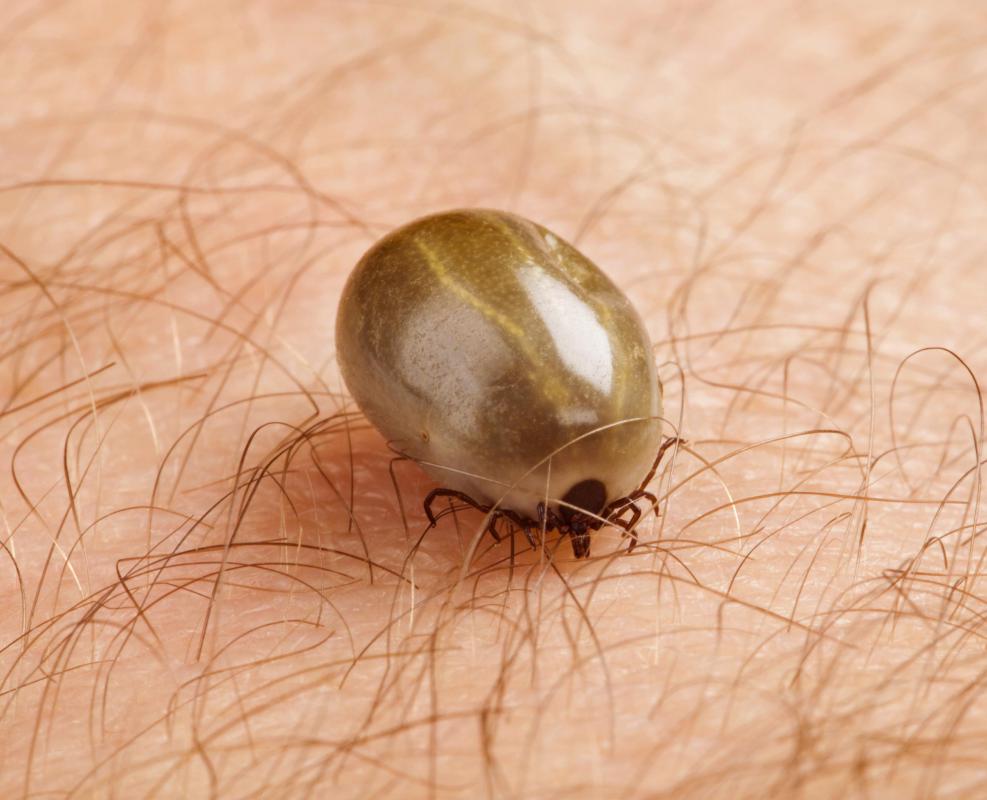At WiseGEEK, we're committed to delivering accurate, trustworthy information. Our expert-authored content is rigorously fact-checked and sourced from credible authorities. Discover how we uphold the highest standards in providing you with reliable knowledge.
What is Anaplasmosis?
Anaplasmosis is a bacterial disease that infects white blood cells. It is carried by certain species of ticks. Like other illnesses carried by these creatures, it can have vague symptoms and be difficult to diagnose.
Earlier in this century, anaplasmosis was more of an economic problem and a disorder associated mainly with cattle, but this is no longer the case. In 1993, human anaplasmosis was discovered. Originally the disease was known as human granulocytic ehrlichiosis (HGE), then as human granulocytic anaplasmosis (HGA), before being renamed human anaplasmosis in 2003. About 600 to 800 cases a year are reported to the U.S. Centers for Disease Control. This is probably an underestimate of the actual infection rate.

In humans, anaplasmosis is caused by a type of bacterium known as Anaplasma phagocytophilum. It is transmitted to humans by several species of ticks, including deer ticks. Ticks infected with this bacterium have been found on the Pacific and Atlantic Coasts, as well as states in the midwest, southeast, and southwest, of the U.S. The type of tick that transmits the disease is also found in Europe and Asia. The disease can also be transmitted by hypodermic syringes and tattoo instruments that have not been properly disinfected between uses.

Some people that are infected exhibit very few symptoms, but others suffer symptoms typical to influenza. They can have a fever, muscle aches, severe headache, shaking, and chills. One complication is that the ticks that transmit anaplasmosis often also carry the bacteria that cause other diseases, such as Lyme disease, so that a person may become infected with multiple diseases at once. The elderly and people with compromised immune systems are the most susceptible to anaplasmosis.

Diagnosis is difficult because the symptoms are so general. It can take three weeks after the initial infection before symptoms develop. The tick must feed for at least 12 to 24 hours in order to transmit the disease-causing bacteria. Laboratory tests are required for diagnosis. Such tests look for the presence of antibodies to A. phagocytophilum, or use the polymerase chain reaction (PCR). The latter test will look for the presence of DNA from the bacteria that have invaded white blood cells.

Treatment usually involves tetracycline antibiotics, particularly doxycycline. Unfortunately, a lot of people do not seek treatment because they do not realize they are infected. Untreated, the disease can have fatal complications, such as kidney and respiratory failure. It is possible to get re-infected, if one has already had the disease. There are vaccines available, but as of early 2010, they are not available in the United States.
AS FEATURED ON:
AS FEATURED ON:















Discuss this Article
Post your comments